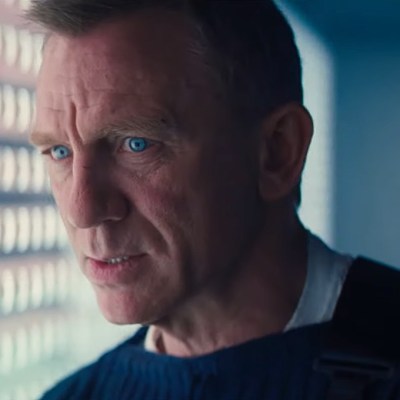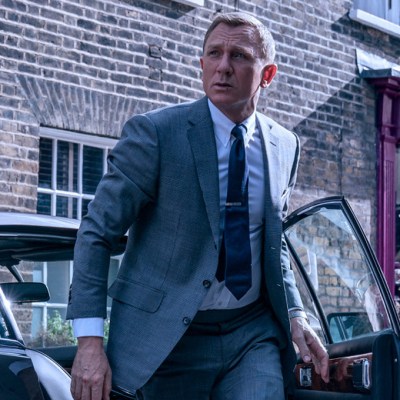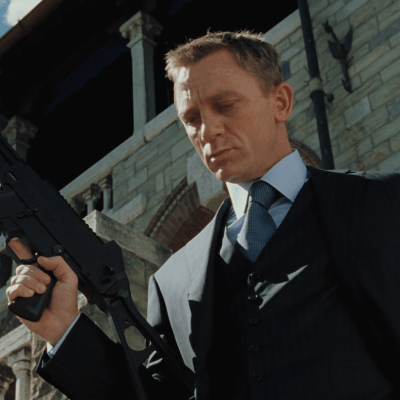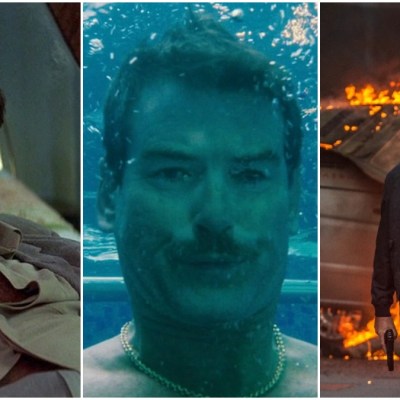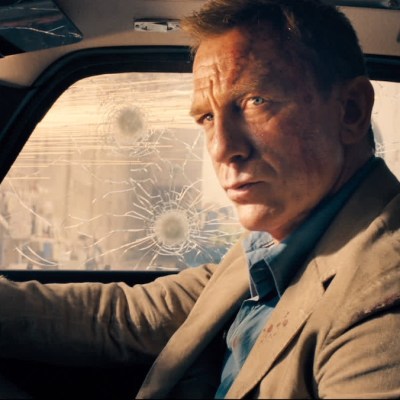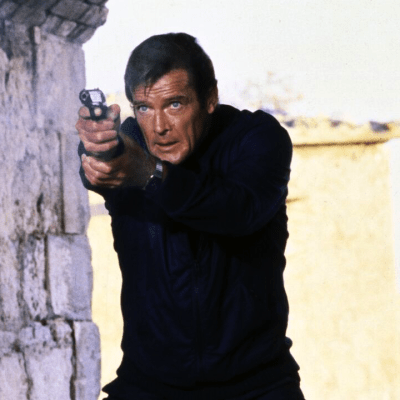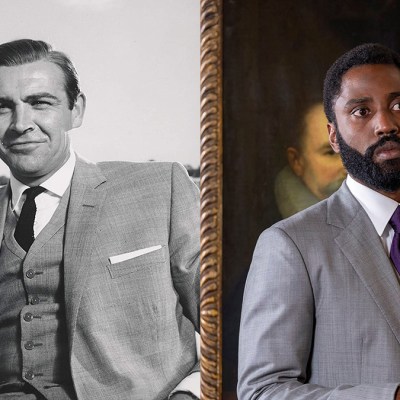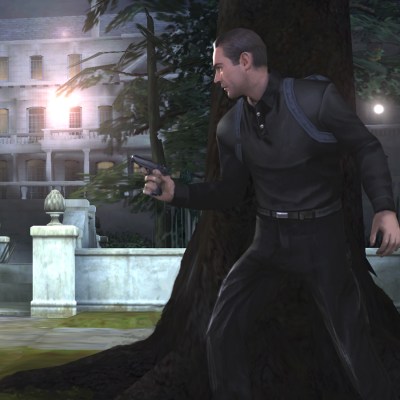James Bond Movies Ranked From Worst to Best
Our staff and readers rank every canonical James Bond movie ahead of No Time to Die’s release. And it’s shocking, positively shocking.
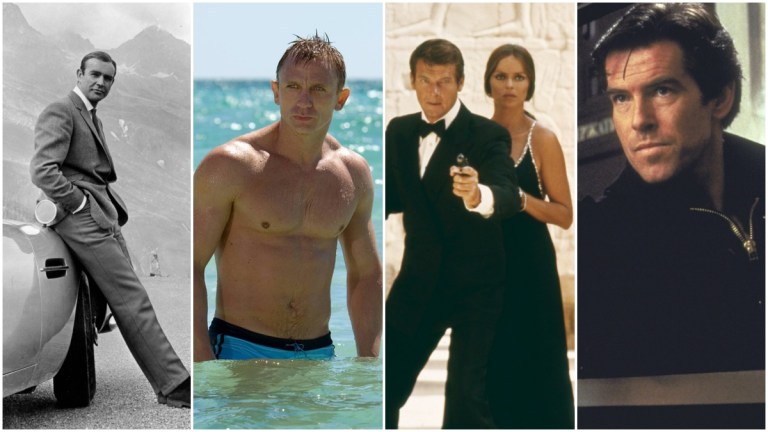
When Ian Fleming first created the character of 007, he settled on calling him James Bond because it was the “dullest name I’ve ever heard.” How ironic that nearly 70 years after that decision, and almost 60 years since the first James Bond movie, Dr. No (1962), that moniker is still associated around the world with thrilling action and exotic danger.
Beginning with the first Bond film from producers Cubby Broccoli and Harry Saltzman, and which starred Sean Connery as the international man of mystery, 007 has burrowed into the global zeitgeist. And he’s never left. There have been 24 canonical Bond films produced by either Broccoli and Saltzman, or their successors Barbara Broccoli and Michael G. Wilson, and six actors who’ve donned the tuxedo during that run. Over the years, the debate has been endless over who is the Best Bond, and which is the best Bond movie. Well, we’re here to settle that latter argument once and for all. The entire Den of Geek staff, as well as our readers, have been asked to pick their favorite 007 adventures, and to rank which are the best. Below is the definitive list.
*Editor’s Note: We have chosen to only rank films in the official series and that were produced by Eon Productions. For that reason, unconnected Bond films like Never Say Never Again (1983) and Casino Royale (1967) were not included.
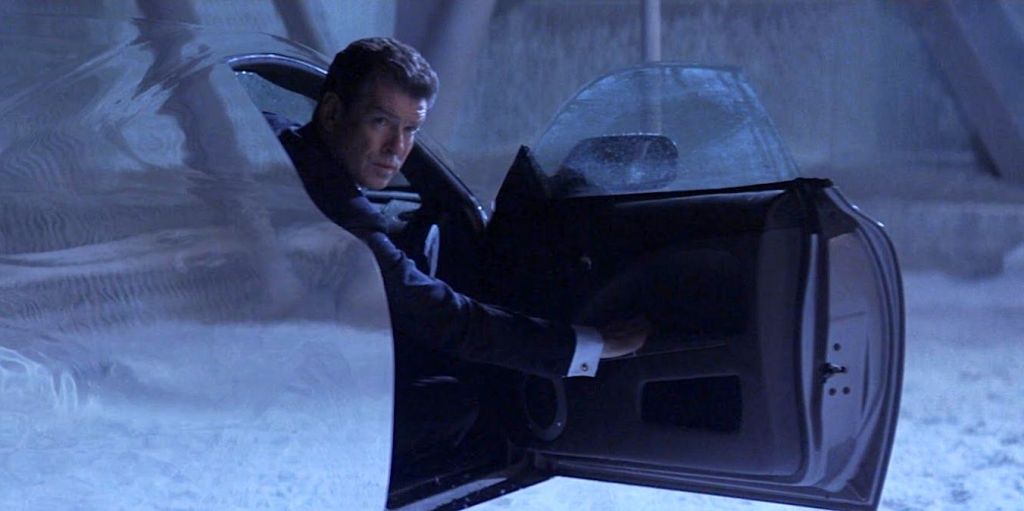
24. Die Another Day (2002)
Like his two most famous predecessors, Sean Connery and Roger Moore, Pierce Brosnan ended his four-film run as James Bond on a particularly low note. In fact, Die Another Day (which was also the 20th film in the official series) has ended up on many lists, including this one, at the very bottom. It is certainly the nadir of the Brosnan era, although whether it fulfills the same role for the entire series is debatable. I might even argue films like Quantum of Solace and A View to a Kill could say “hold my beer” to that dubious honor.
Die Another Day starts off promisingly enough, with Bond captured and tortured in North Korea for 14 months, leading M to decommission him on fears that he may be compromised. But a potentially intriguing thriller involving North Korean double agents and the smuggling of conflict diamonds devolves into a ludicrous romp about an ice palace, giant lasers redirecting sunlight, an invisible car that’s indestructible, and a fight aboard an airplane literally coming apart in mid-air. Throw in one of the series’ worst theme songs (courtesy of Madonna), uninspired performances from a tired Brosnan and Halle Berry, and you ultimately find yourself wishing that the movie itself would die—not another day, but right now. – Don Kaye
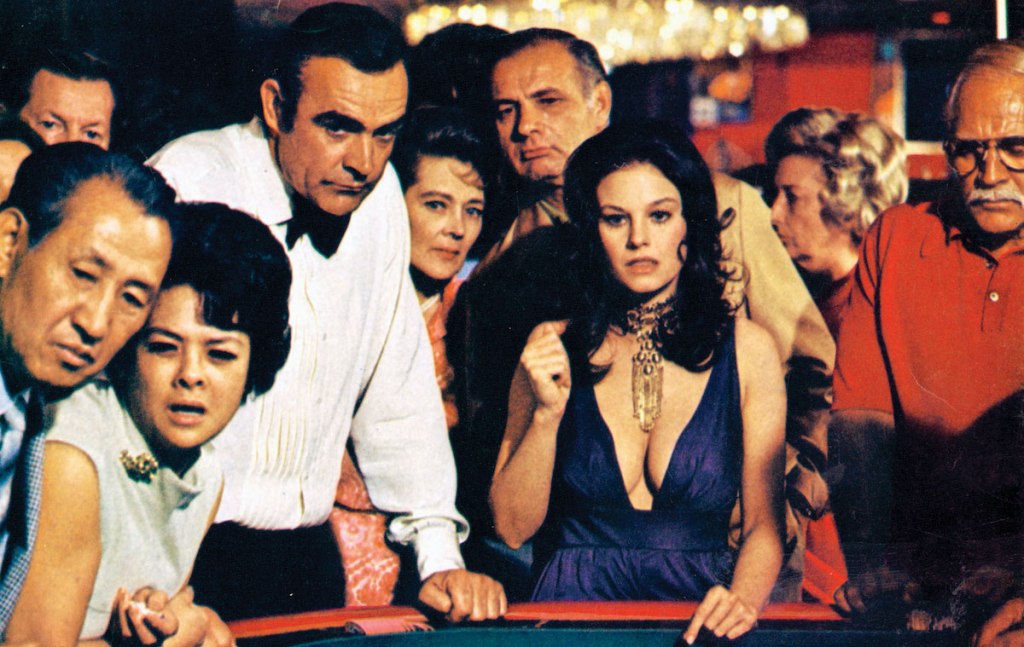
23. Diamonds Are Forever (1971)
What is it with Bond and diamonds? This is one of two 007 escapades involving the world’s hardest substance (the other is Die Another Day) and based on that, the series should stick to gold. Diamonds Are Forever marked the return of Sean Connery after a one-film absence from the series, but it’s clear from the start that the doughy-looking star is just phoning in his performance (from which, to be fair, he donated his salary to charity).
Directed by Bond mainstay Guy Hamilton, Diamonds goes for a jauntier, campier tone after the grim ending of On Her Majesty’s Secret Service, with Bond tracking a diamond-smuggling operation that ultimately leads him to arch-nemesis Blofeld (whose murder of Bond’s wife in the previous movie is inexplicably never addressed, not even once). The movie is just entertaining enough that you can keep it on in the background while doing something else, but its dreary ending on an oil rig, dated homophobia (Mr. Kidd and Mr. Wint, anyone?), and by-the-numbers vibe make this one a real cubic zirconia. – DK
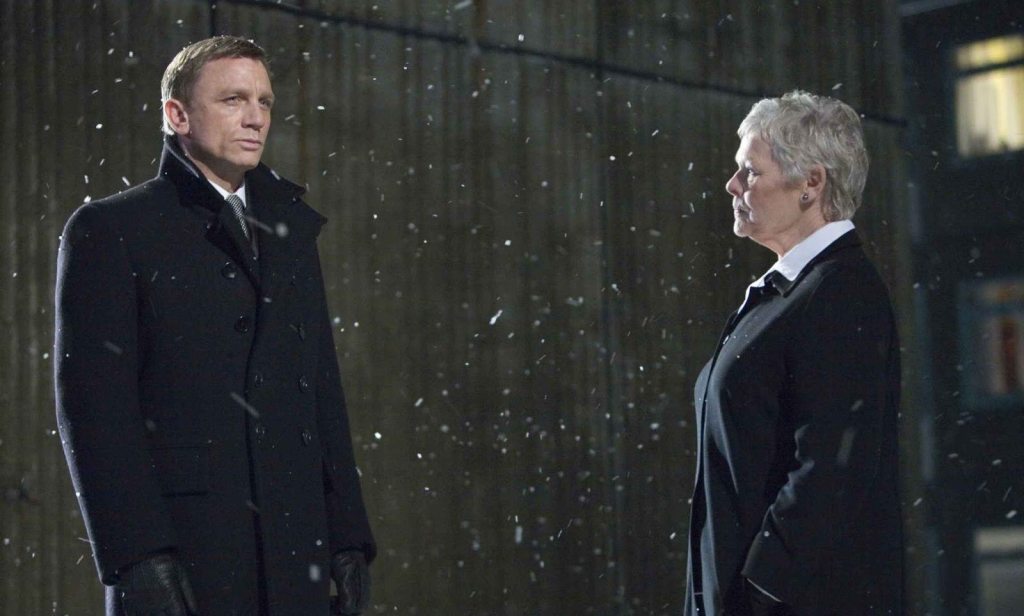
22. Quantum of Solace (2008)
Quantum of Solace’s biggest crime is that it’s just so dull. From the desert backdrops that were used for the final act to the sterile environments where middling Bond villain Dominic Greene (Mathieu Amalric) executes his convoluted evil plan, there isn’t really anything interesting to look at in Marc Forster’s first and only 007 film. It’s no surprise, then, that this was the first stumble of the Daniel Craig era—in fact, our readers voted it in dead last place!
It probably didn’t help that Quantum is one of the few direct sequels in the franchise, meaning that Forster had to contend with the storytelling baggage of the much better Casino Royale. At least you can say Quantum of Solace is the movie that truly established the Craig era’s continuity, with a SPECTRE-like secret organization working against MI6 at every turn, and Bond enduring the heartache of a very bad break up with Vesper Lynd in the last movie. So for a rebound, he and the rebellious Camille Montes (Olga Kurylenko) go to Bolivia. Their mission: stop a coup d’état that could give Quantum a major foothold in South America. What proceeds…isn’t all that fun. – John Saavedra
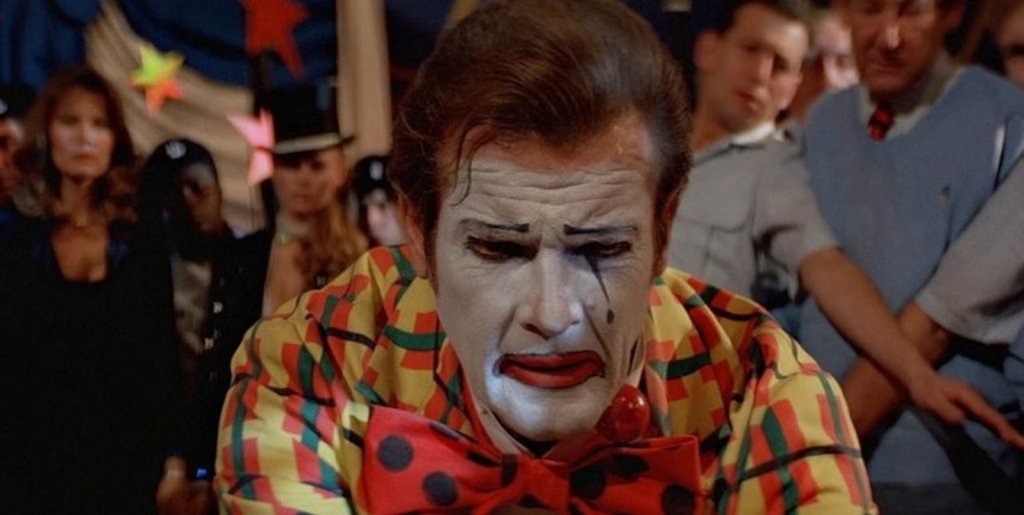
21. Octopussy (1983)
A clearly aging Roger Moore’s sixth outing as 007 (and second to last) follows the template of its predecessor, 1981’s For Your Eyes Only, with a renewed focus on geopolitical adventure and less reliance on gadgets, effects, and winking humor (although the jokes, when they do come, are more sophomoric and out of place than ever). But whereas Eyes served as a nice palate cleanser for the series, with a straightforward plot and a few offbeat touches, Octopussy is kind of a mess.
While its title is taken from an Ian Fleming short story, the mostly original Octopussy finds 007 drawn into a scheme involving Fabergé eggs, an exiled Afghan smuggler, a rogue Soviet general, and a cult of beautiful women who also run a circus, all tied to a plan to detonate a nuclear warhead on a U.S. airbase in West Germany. As you can tell from that sentence, the story is needlessly, hopelessly complicated, with an endless series of betrayals and switchbacks, the villains don’t make much of an impression either. Nor does Maud Adams in the title role as the leader of the cult; she’s meant to be a newer kind of Bond Girl, but remains ill-defined—as does much of this plodding, uninteresting entry. – DK
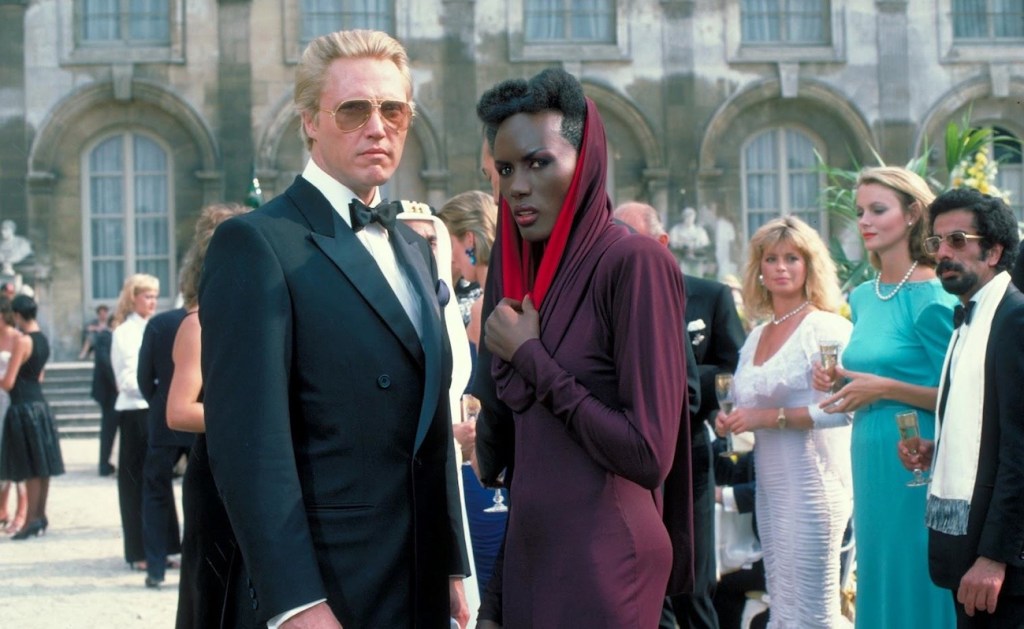
20. A View to a Kill (1985)
Roger Moore’s final outing as James Bond went out much like his tenure: strange, inconsistent, but maybe entertaining in a kitschy sort of way. To be sure, A View to a Kill is another one of the franchise’s low points, with Moore being particularly long in the tooth at the age of 58. He more often resembles his leading ladies’ lecherous uncle than he does a tall dark stranger. The overall film likewise suffers from a desperate, out of touch quality. Did anyone really think putting Moore (or his stuntman) on a snowboard while Beach Boys music played would bring in the kids?
Nonetheless, as bad as the movie is, there are bemusing charms, chief among them being the film’s pair of villains, ‘80s yuppie Max Zorin (Christopher Walken) and his henchwoman May Day (Grace Jones). There’s some unconvincing plot tidbits that reveal Walken’s secretly a Russian test tube baby, but that bizarre performance has no nationality. And the jarring contrast of Jones and Moore in bed—where she is totally the dominant—is one for the ages. Throw in a banger Bond song by Duran Duran and some nice character work by Patrick Macnee as Moore’s sidekick who should’ve been in the movie more, and you still have a guilty pleasure. Pity that Barbara Bach declined to cameo, as it might’ve made this a more fitting sendoff for the Moore era. – David Crow
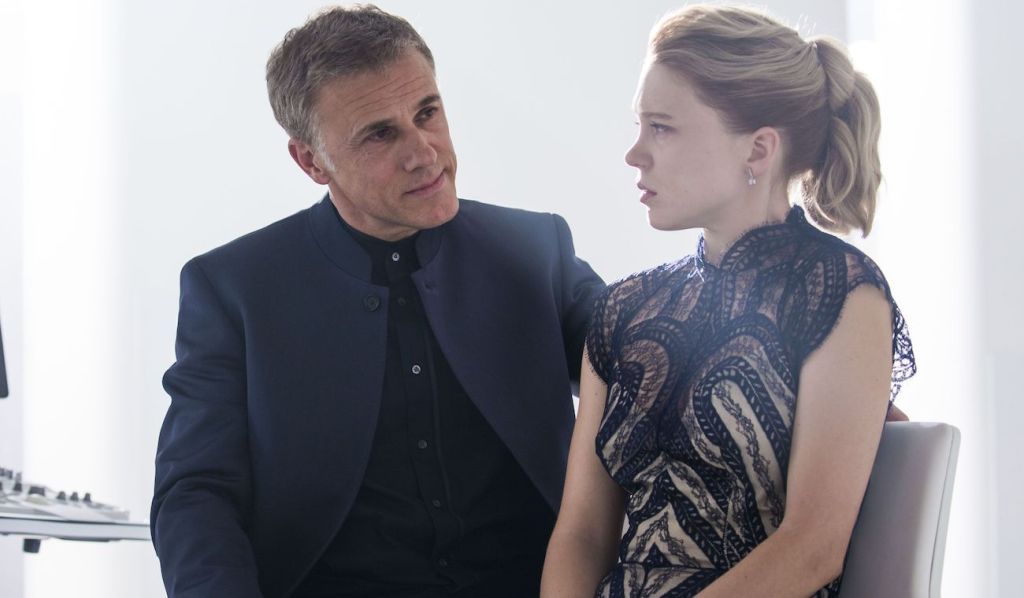
19. Spectre (2015)
After saving the ship from capsizing with Skyfall, director Sam Mendes decided to sink it himself with the extremely convoluted, potentially era-breaking Spectre, a very busy movie that cares more about connecting the Daniel Craig movies into one “cohesive” timeline than its own largely generic spy adventure. Mendes’ attempt to present Ernst Stavro Blofeld as the big bad behind everything from Casino Royale to Skyfall largely falls flat, even if Christoph Waltz puts in a solid performance as the iconic villain. But how much of this is the director and writers’ fault, and how much of it is due to the Broccolis experimenting with the idea of a Bond cinematic universe remains unclear.
Either way, it’s all just kind of boring. Even the budding romance between Bond and Madeleine Swann (a cunning Léa Seydoux) doesn’t really work. You can hardly believe Bond has decided to finally leave all this MI6 business behind him for love. And Blofeld’s childhood connection to the Bond family is ludicrous, too. The movie’s plot is ambitious, and completely fails at those ambitions. You’ll need patience for this one, especially if you enjoyed the more standalone Craig offerings, which this movie actively tries to break at every turn. – JS
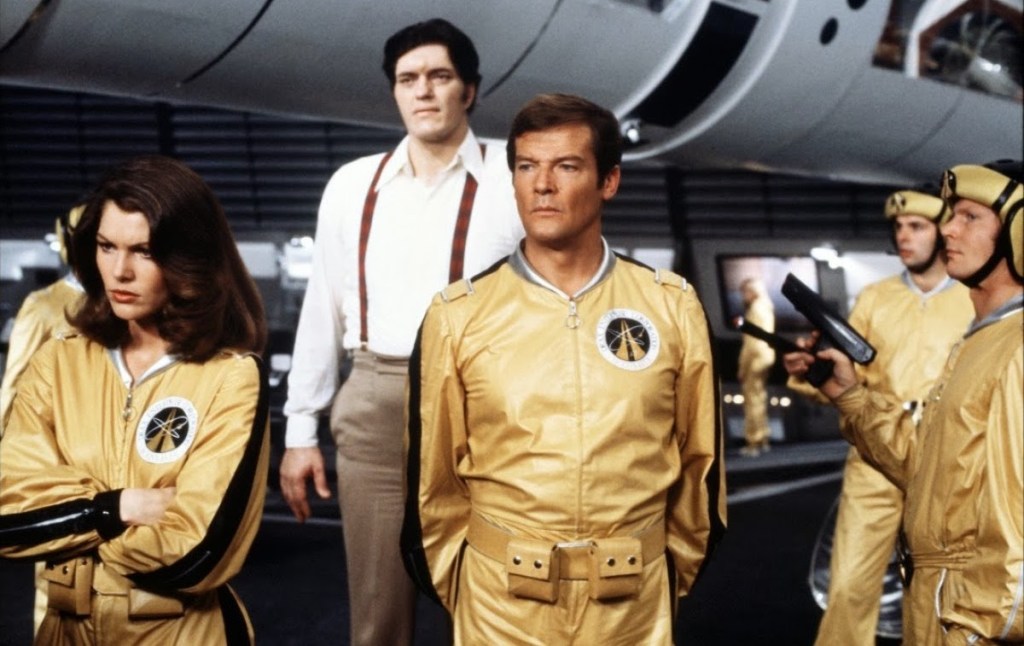
18. Moonraker (1979)
When The Spy Who Loved Me was released two years before Moonraker, it cemented the actor’s popularity in the role (a first since Sean Connery left the franchise), and established a campy, convivial atmosphere. Looking at that movie’s box office receipts, the now solo Bond producer Cubby Broccoli went “more of this, but also Star Wars.” The result is perhaps the most spectacular misfire in 007’s oeuvre.
With a ridiculous and borderline nonsensical plot contrived solely to create a reason for Moore’s 007 to be sent to space in the third act and participate in laser fights, Moonraker is bombastic and bloated where Spy was amusing and quick-witted. The movie haplessly pinballs between inconsistent tones and styles, like sight gag of returning henchman Jaws (Richard Kiel) doing a double take before going over a waterfall as if he’s he’s Yosemite Sam, and the scene where villain Hugo Drax (Michael Lonsdale) feeds Bond’s latest one night stand to Rottweilers in a particularly brutal chase sequence.
Still, Moore is always affable, and for that matter so is Jaws in the film’s dynamic opening fight scene where the two duel while falling out of a plane. Plus, someone had to invent the trope of a desperate franchise film going into orbit. – DC
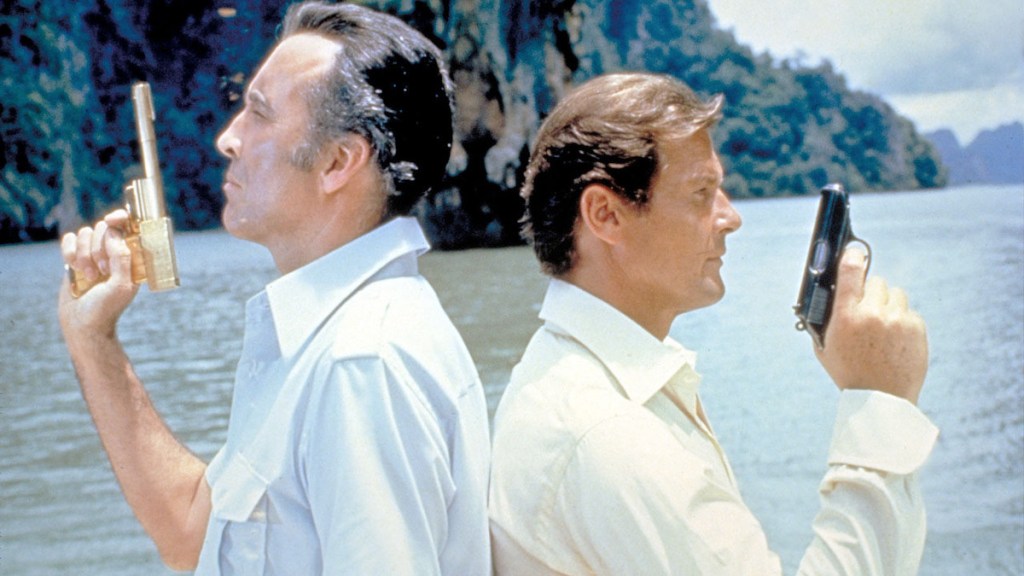
17. The Man with the Golden Gun (1974)
Roger Moore and Christopher Lee. James Bond versus Dracula. On paper this should’ve been one of the best 007 films. And for a fleeting moment, as the two performers finally have their duel and Bond stands at 10 paces from Lee’s Scaramanga, it is. Sadly that showdown only takes up a handful of minutes in this otherwise muddled affair.
Still early in Moore’s tenure as Bond, The Man with the Golden Gun finds the actor not yet locked into his interpretation of the role. At times the script even seems to be written for Sean Connery, with Bond displaying a coldness and physicality that seems unnatural to Moore. Otherwise, the movie’s awkward attempts to imitate Bruce Lee films and some rather cruel dumb blonde jokes at Britt Ekland’s expense have aged incredibly poorly. But hey, it paved the way for Hervé Villechaize to be on Fantasy Island. So there’s that. – DC
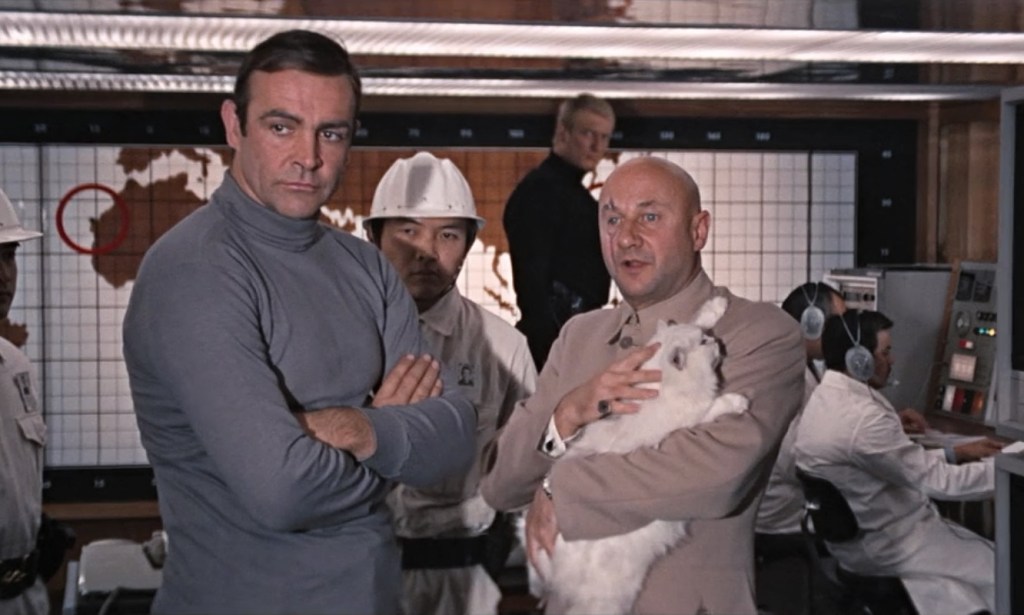
16. You Only Live Twice (1967)
Sean Connery’s fifth outing as 007 was also his last… until, of course, he made a brief return four years later in Diamonds Are Forever (and again in 1983’s non-canon Never Say Never Again). Unfortunately, the original James Bond doesn’t go out on a high note with this one: Despite its beautiful Japanese locales and the long-awaited face-to-face introduction of supervillain Blofeld (Donald Pleasance), You Only Live Twice (directed by Lewis Gilbert) reaches for epic status but already shows how the Bond franchise was running out of gas after just five years.
Following the bigger adventures and gadgets of Goldfinger and Thunderball, this one aims for the stars, literally, as Bond tries to find out who is snatching American and Soviet spacecraft out of orbit. That leads him to Blofeld and the latter’s massive lair hidden in a volcano, tropes that would be parodied for decades to come.
But You Only Live Twice—the first of many Bond entries to almost completely throw away any connection to the Fleming novel of the same name—has a perfunctory, going-through-the-motions feel and an especially racist, sexist tinge to the proceedings in Japan (even for the 1960s) that bog the movie down. Although it was a box office success, it’s clear that the franchise needed a change. – DK

15. The World Is Not Enough (1999)
The World Is Not Enough is one of the more underrated film in the 007 canon. Yes, it has problems—most notably Denise Richards’ disastrous miscasting as a nuclear scientist, as well as a climactic showdown in a submarine that falls flat. However, here’s the first film on this list that works more often than it doesn’t, and which has some of the best scenes in any Bond film. Most of them involve the film’s true villain, Elektra King (Sophie Marceau).
For the first and only time in a Bond movie, a woman is the big bad. More impressively, she’s able to fool Bond and the audience of her villainy. In this way, the franchise riffs on Bond’s past, including the loss of his wife, to sharp effect. Pierce Brosnan also may never have been better in the role than when he brings his usual levels of extreme suaveness, as well as a steely sadness. All of which culminates with Bond shooting Elektra in cold blood. The action clearly took a little more of his soul, which even M appears to lament.
Oh yes, this is also the first Bond movie to make Judi Dench’s M a main character. In some ways, her relationship with Brosnan’s 007 is more complex than the mother-son dynamic she cultivated with Daniel Craig, and things never got weirder than her witnessing Bond and Elektra’s passion play. Lastly, the Garbage song and opening sequence are aces. – DC

14. Tomorrow Never Dies (1997)
Pierce Brosnan’s second go in the role of Bond sees the performer both more relaxed and in command of 007’s legacy. The film is typical Eon shenanigans where a supervillain tricks world leaders into a World War III standoff—the UK and China, this time—and it’s sprinkled with similarly boilerplate action sequences. Yet Tomorrow Never Dies has aged pretty darn well since the movie’s main megalomaniac (Jonathan Pryce hamming it up to high heaven) is a blatant caricature of Rupert Murdoch. A Bond movie where 007 takes a media mogul who is triggering an international crisis to juice his cable news network’s ratings, and then feeds this guy to a buzzsaw? So satisfying.
The movie also introduced us to Michelle Yeoh as Wai Lin, who’s still among the most capable “Bond Girls” and really is 007’s equal. She might even be his superior given Yeoh’s natural martial arts talents. (It’s a real shame they didn’t let her or other Hong Kong talent choreograph the fight scenes, however.) The sequence where Bond and Lin fight for control of a motorcycle during a chase, or where Brosnan and Desmond Llewelyn snark during a particularly good Q walk-in, makes this an enjoyable if middling Bond flick. – DC
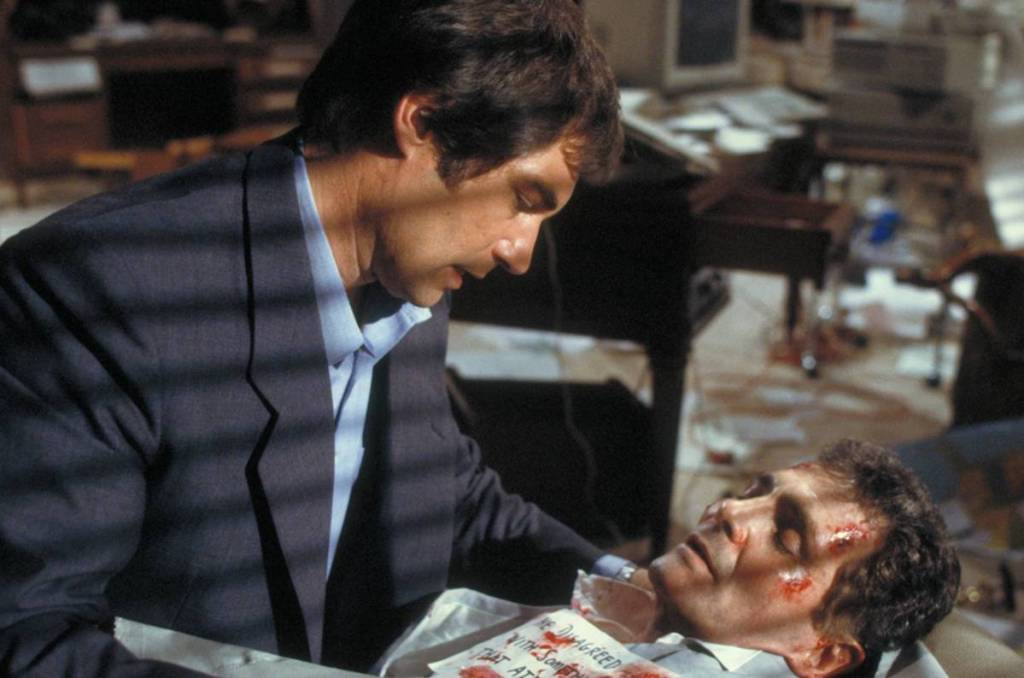
13. License to Kill (1989)
Timothy Dalton’s second and final outing as a darker, more serious Bond was met with a polarized response from both critics and fans, and remains a dark horse entry in the series. Originally titled Licence Revoked—until the studio learned that typically dumb American test audiences didn’t know what the word “revoked” meant—the movie does indeed find Bond with his licence to kill suspended by M. So he goes instead on a personal mission to avenge the savage mutilation of friend Felix Leiter (David Hedison) and the murder of Leiter’s new wife by a sadistic drug lord (Robert Davi).
It’s nice to see Leiter again (with Hedison encoring in the role after first appearing in Live and Let Die 16 years earlier), and it’s also refreshing to give Bond a more personal motivation this time out. Davi is an effective villain, good old Q (Desmond Llewelyn) gets to spend a lot more time in the field, and the climactic truck chase (staged by director John Glen, still the record-holder with five Bond films on his resume) is one of the series’ best action sequences. Sadly this darker, more violent Bond couldn’t compete with the likes of Batman and Indiana Jones at the box office in 1989, making Licence to Kill the lowest-grossing entry in the series to date—and consigning the Dalton era to the MI6 archives. – DK
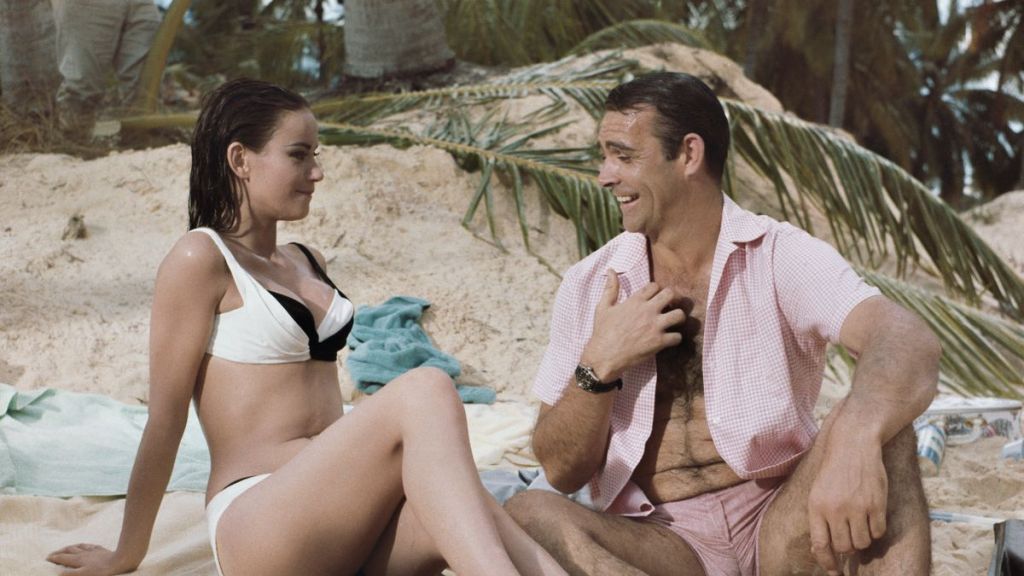
12. Thunderball (1965)
When you adjust for inflation, Thunderball gives Skyfall a run for its money as the highest-grossing Bond film ever. It certainly sold the most tickets, coming out at the midpoint of the 1960s and zenith of Bondmania’s global conquest. It’s in that context which allows Thunderball to also be most enjoyable. This is the one which reimagined SPECTRE as a boardroom of baddies sitting in chairs designed to literally fire insubordinate employees; the first film where Bond and the villain swap thinly veiled insults over cards and then the spy steals the fiend’s girl right in front of him; the one where an eyepatch wearing bloke keeps pet sharks in a swimming pool. Bond even uses his jetpack!
That said, other elements have aged far less gracefully. Thunderball is probably the most sexist and misogynistic Bond movie ever produced, which has brought it under fire from even No Time to Die’s director. It’s a problematic film, but even among its dated gender politics, it should be noted henchwoman Fiona Volpe (Luciana Paluzzi) is the first woman in the series to be able to roll her eyes at Bond’s charms and mock his ego, and leading Bond Girl Domino (Claudine Auger) is still one of the series’ best: She uses Bond as much as a disposable toy as he does her. She is also the only woman in the series who kills the villain and saves 007’s bacon. It’s such a good finale it almost makes up for all those dull underwater scuba fights. – DC

11. The Living Daylights (1987)
To this day, some Bond fans would argue that Timothy Dalton didn’t get a fair shake as 007. After just two movies in the late ‘80s, he was down and out, losing his license to kill much earlier than his two major predecessors. But Dalton’s grittier, much darker Bond always faced an uphill battle of building off Roger Moore’s 12-year legacy as the superspy.
All that said, The Living Daylights is a very solid outing for Mr. Bond (and director John Glen’s fourth of five Bond films). 007 once again faces off with his archenemies at the KGB—one of the final 007 films to deal with the Cold War—and in a globetrotting adventure that takes him all over eastern Europe, Morocco, and Afghanistan. And he’s accompanied by Maryam d’Abo’s memorable Kara Milovy, a professional cellist who moonlights as a KGB sniper (sort of). Together, this entertaining duo partake in one of the greatest chase sequences in Bond movie history involving a cello case, a lot of snow, and plenty of bullets. Worth a watch for this scene alone. – JS
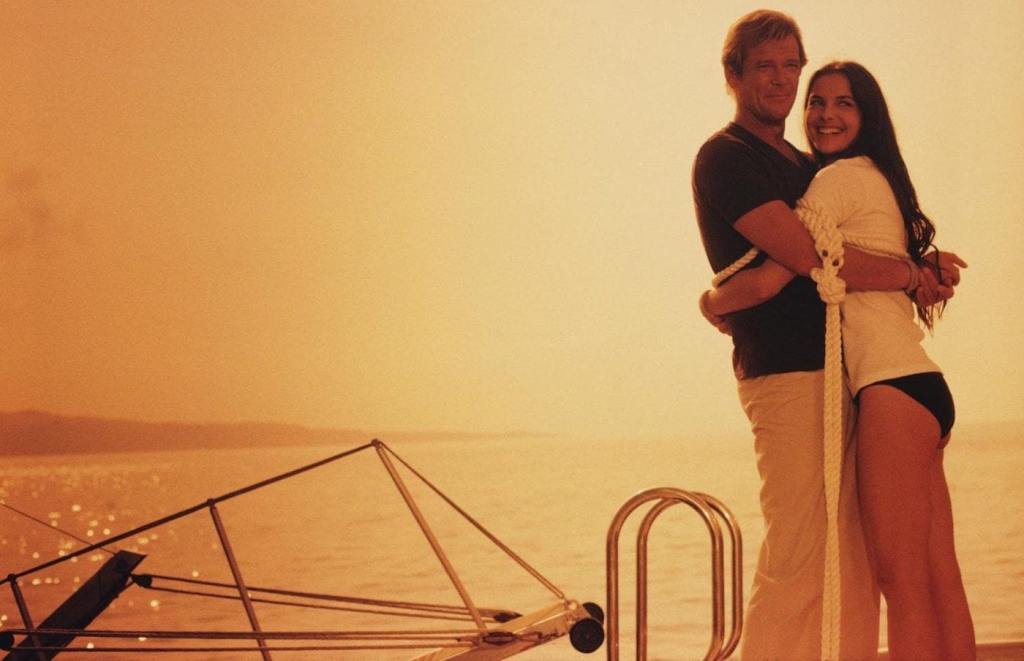
10. For Your Eyes Only (1981)
When you think of Roger Moore’s run of Bond films, you likely recall the high camp of cars that turn into submarines and laser guns in space. Which is why, for a while, Moore and Broccoli’s back-to-basics approach in For Your Eyes Only went somewhat overlooked. This decidedly scaled down adventure is the closest Bond came to a real Cold War thriller since From Russia With Love, and the setup is refreshingly simple too: Moore’s Bond is after a missing MacGuffin that the Soviets also want. Both parties then play spy games with local criminal syndicates in scenic Greece and the breathtaking Italian Alps.
The appeal of the movie is how low-key everyone plays it. There are few gadgets, no end-of-the-world stakes, and nothing which looks twee. Even the finale feels like it’s taken out of The Guns of Navarone instead of Return of the Jedi. In fact, the climactic infiltration of a Greek monastery on a high cliff is still a dazzling set-piece, and the resolution of detente between Bond and his KGB counterparts is remarkably graceful. Also Carole Bouquet as Melina, a Greek woman who’s out to avenge the death of her parents while maintaining her perfect flowing black hair, gives the movie just enough dramatic heft to standout in Moore’s run. – DC

9. Live and Let Die (1973)
Roger Moore is no saint in his first Bond outing. This is apparent from the low-key introduction where he’s more interested in hiding a delicate indiscretion with the delightful Miss Caruso (Madeline Smith) than taking an assignment from chief spy M (Bernard Lee). Later Jane Seymour’s spiritual advisor warns, “I know who you are, what you are, and why you have come,” as she peruses the tarot, oblivious to her own sad fate. Bond stacks the deck and seduces the mysticism out of her, robbing the bewitching Bond Girl of her virginity, which gives her the power of precognition. The less venial sins come from cultural appropriation.
This is as mixed a gris gris bag as any you might find at an Oh Cult Voodoo Shop, but it also makes Live and Let Die one of the most memorable of any Bond installments. It’s got snake bite rituals staged by high priest Baron Samedi (Geoffrey Holder), strongarm henchmen fortified with steel, and an archvillain so formidable, he is known throughout the world as Mr. Big (Yaphet Kotto). His plan is to flood cities with free heroin so everyone will get hooked. But the most infectious hooks come from the soundtrack.
The title sequence is by far the best of any James Bond film: sensual, tropical, and brimming with danger. The theme song was written by Paul and Linda McCartney, performed by Wings, and nominated for an Oscar. The score was written by The Beatles’ producer George Martin, and was the first which was not orchestrated by John Barry. B.J. Arnau torches the title song at a nightclub and the end credits. The Olympia Brass Band leads the funeral march, while its trumpeter breaks formation to knife an officially designated onlooker. The many deaths in Live and Let Die are all very creatively executed, but the most fun parts of the film are the simplest of the gadgets. The coffin with the false bottom, the revolving booth at Fillet of Soul, and the magnetic watch. Moore is a fish out of water even before MI6 comes to Harlem. He drops patented 007 double entendre rejoinders without Sean Connery’s knowing wink but gets to play hopscotch with alligators. He would go on to be more comfortable with the part, although not as much fun. – Tony Sokol
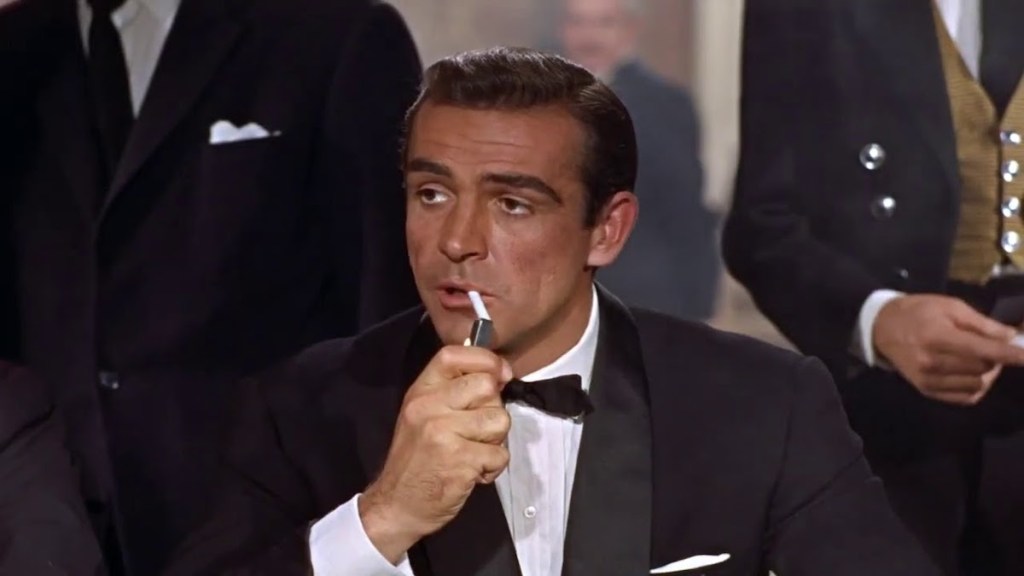
8. Dr. No (1962)
The first James Bond movie is still one of the very best of the series. It introduced Sean Connery as the classic version of the British secret agent, and while he got more comfortable in the role in his next several outings, one could argue that he was never better than he is here—suave, brutal, slightly haunted, arrogant, and unrelenting. Almost all the Bond trademarks are established: the humor, the dynamic with boss M (Bernard Lee), the easy sexuality, the incredibly beautiful Bond Girl (Ursula Andress), and the introduction of a self-satisfied, equally arrogant supervillain (Joseph Wiseman in the title role, which would never pass muster today).
The story sends Bond to Jamaica to investigate the death of a fellow agent, only for him to come up against Dr. No. The latter is shooting down American rockets at the behest of SPECTRE, a global criminal organization intent on destabilizing the world and its fragile Cold War balance of power. Largely faithful to Fleming’s novel (which was actually the fifth in his series), Dr. No is almost understated compared to later Bond outings but introduced a hero and a franchise for the ages. – DK

7. Skyfall (2012)
What a home run of a Bond flick. Eschewing the Quantum nonsense from the previous two films, Skyfall hits much closer to home for Bond, Judi Dench’s M (her last time in the role), and the rest of MI6. When a new villain with ties to M threatens the existence of the very agency he swore to protect, an older, more-troubled-than-usual Bond comes out of self-imposed exile to make things right. The result is one of the very best third acts in Bond history, thanks to the wonderful direction of Sam Mendes, who righted the ship for Craig after Marc Forster crashed it into a reef.
Craig puts in a much more complex performance as a Bond who’s been out of the game too long, and Naomie Harris is a very welcome addition as a much more badass Moneypenny (not behind a desk!), but it’s Javier Bardem as cyber-terrorist Raoul Silva who steals this movie. Undoubtedly the best villain of the Craig era, Silva is someone you might even sympathize with (a little) once he reveals his long-buried connection to M. And we learn some huge things about Bond’s past along the way too. This is for sure the one to watch after Casino Royale. – JS
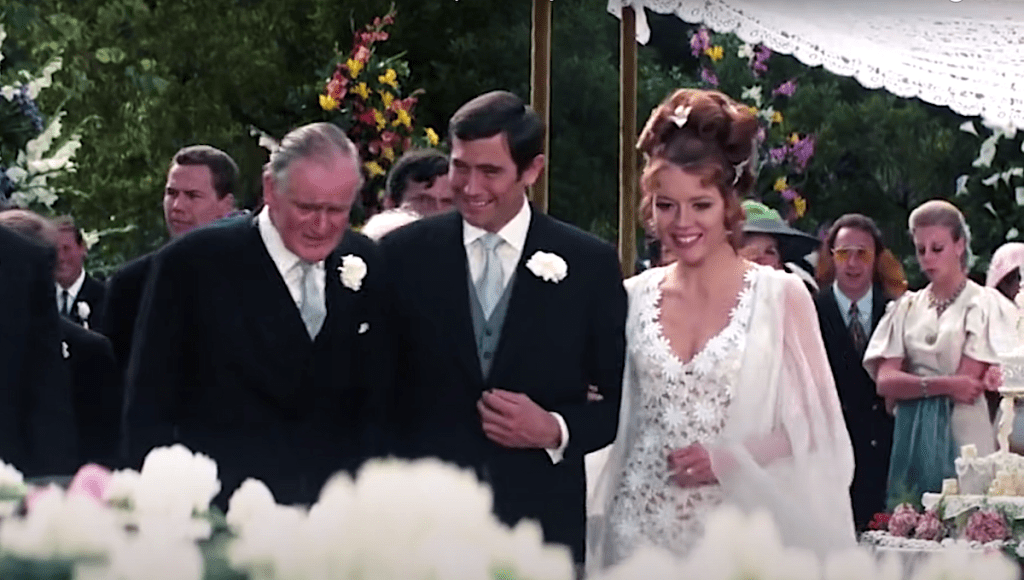
6. On Her Majesty’s Secret Service (1969)
When Sean Connery left the Bond series after 1967’s disappointing You Only Live Twice, it was unclear whether the series could continue with a new face in the role. Not only did the producers come up with a surprising new Bond out of left field in George Lazenby, but he made his debut in what has rightly been reappraised as one of the best films—if not the best—in the entire series. Remarkably faithful to the novel on which it’s based, directed with flair by Peter R. Hunt (a longtime Bond editor making his one and only directorial outing), and portraying Bond in a light we’ve never seen, On Her Majesty’s Secret Service is a classic.
While it’s hard to shake off the image of Connery, Lazenby does a much more admirable job that was acknowledged at the time in his sole appearance as 007. He’s less suave, rougher around the edges, and capable of fear and vulnerability, the latter made apparent first in his marriage proposal to romantic foil Tracy di Vicenzo (an excellent Diana Rigg) and then again in the film’s shocking, unforgettable ending. Telly Savalas is the best iteration of Blofeld to date while Hunt stages some of the franchise’s most visceral and exciting action scenes. It’s a damn shame Lazenby bowed out after this. The series might have taken an entirely different course had he stayed. – DK
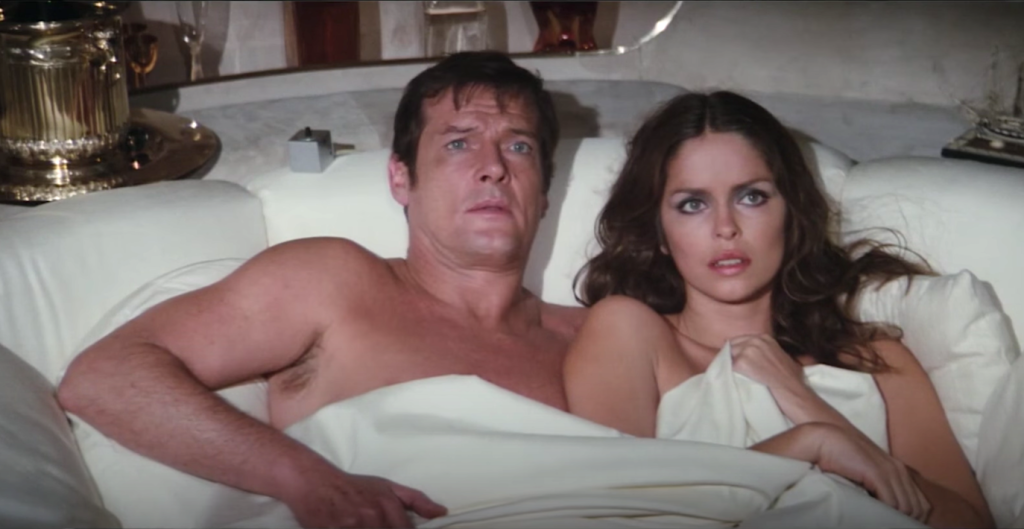
5. The Spy Who Loved Me (1977)
Roger Moore has his fans and detractors, but it’s impossible to not be smitten with The Spy Who Loved Me. It’s the peak of the outlandish “save the world” Bond movies, and it comes together like a finely strained dessert cocktail. Of course its secret is that despite being about Bond fighting another megalomaniac over some nuclear subs, TSWLM is as much a romantic comedy romp as it is an action flick. Think Ninotchka, but with submarine-cars.
Pivoting on an unlikely romance between British agent 007 and Soviet Maj. Anya Amasova (Barbara Bach), the film follows the pair as they meet cute (she sics men on Bond beneath the Pyramids of Giza), continues as they squabble over a microfilm MacGuffin, and finally sees them get together due to undeniable chemistry. They even have the third act breakup because of a little thing like realizing Bond killed her fiancé in the pre-title sequence. But when that sequence includes the greatest Bond stunt of all-time, with Rick Sylvester skiing off a a real glacier and then surviving by unfurling a Union Jack parachute, such things can be forgiven. After all, nobody does it better.
… And yes, that Carly Simon song is also the best Bond tune. – DC
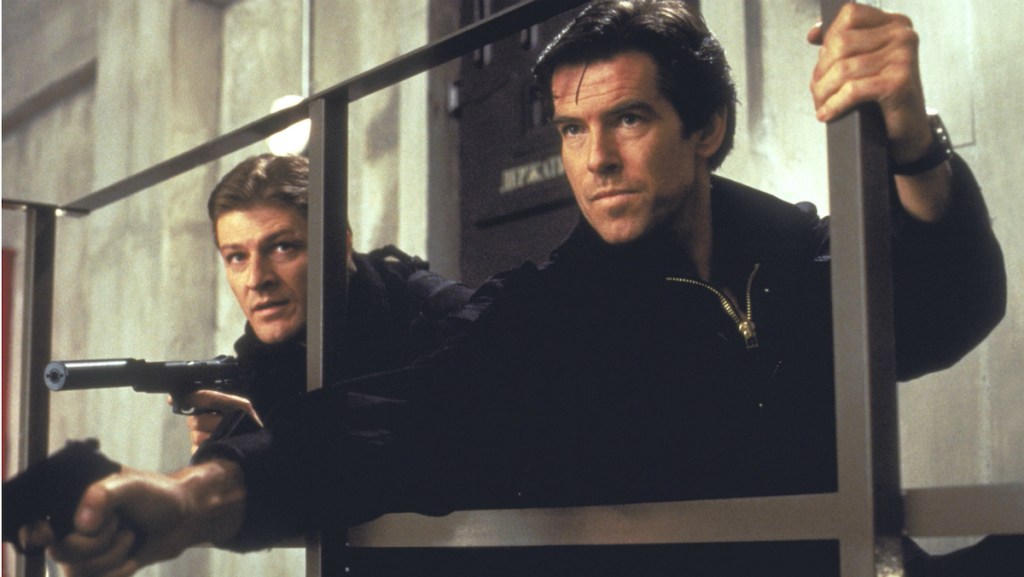
4. GoldenEye (1995)
“GoldenEye saved James Bond.” This bit of conventional wisdom might be hyperbole, but it’s not far off from the truth either. In 1995, 007 was in a precarious place. The Cold War was over, rosy optimists were declaring “the end of history” in our time, and Bond hadn’t been in a movie since 1989. Worse, the last two films he did appear in were met with a mixed reception by the general public. Pierce Brosnan finally slipped into the tuxedo at a moment where many were opining if Bond was simply obsolete? “A sexist, misogynist dinosaur,” as his new M, Dame Judi Dench, might say.
The film proved all the naysayers wrong. But better than that, Brosnan and director Martin Campbell injected some vital life back in the franchise’s bloodstream. Like several other films near the top of this list, GoldenEye didn’t so much reinvent the formula as refine it with modern style and a fresh perspective. As much a template-setter for a picture perfect 007 adventure in the ‘90s as Goldfinger was to the ‘60s, this film offers a terrific villain in Sean Bean’s 006—Bond’s evil doppelgänger played by a man who could’ve been Bond—a wonderful henchwoman who is also a great Bond Girl via Famke Janssen’s Xenia Onatopp, and the most memorable method of murder this side of Oddjob’s hat. Even the M and Q scenes were crackling, especially because of the introduction of the aforementioned Dench.
Like a finely tailored suit, all the pieces come together for an even more appealing whole. Brosnan wears it well with a slightly wearier and more haunted Bond than we’d previously seen, but one who can still crack a smile while telling double entendres over martinis. When coupled with some of the best set-pieces in the franchise—from a high wire jump off a Swiss dam to Bond driving a tank through the streets of St. Petersberg—we’re left with one of the best action movies of its decade. – DC
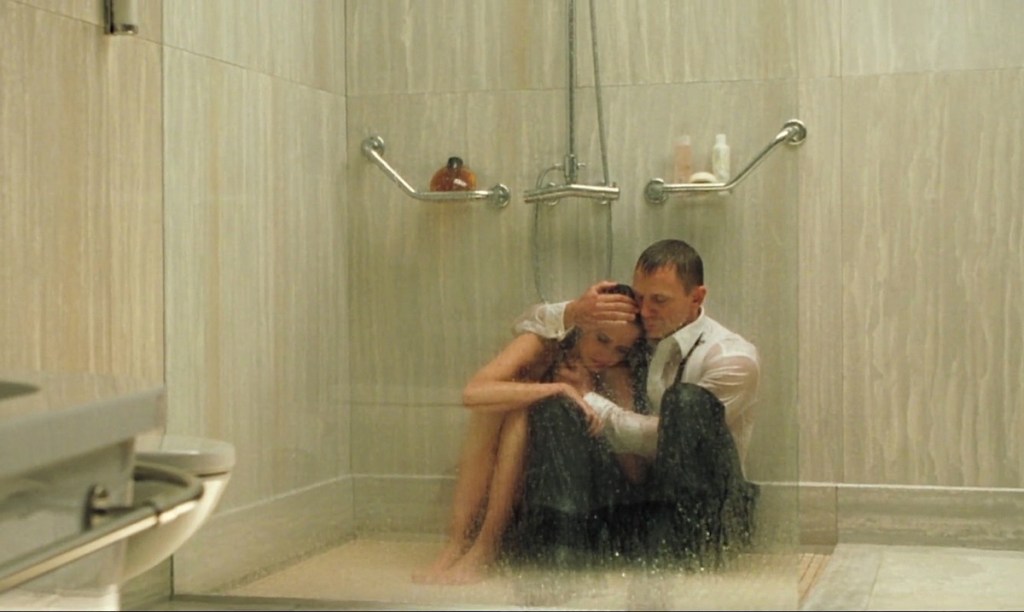
3. Casino Royale (2006)
It’s hard to imagine the Bond franchise still thriving today without the commercial and narrative success of 2006’s Casino Royale. As the first hard reboot of the franchise, and the first in Daniel Craig’s tenure as Bond, Casino Royale took viewers back to the relative beginning of James’ career when he was still earning his license to kill and when those kills still meant something. The film replaced camp with understated performance, swagger with sentiment, and fantastical fight scenes with visceral action.
Much of the film’s success is down to the stellar casting. There’s Craig, of course, who imbues Bond with a world-weariness and bitterness that we don’t see nearly as much in the other interpretations. But there’s also Mads Mikkelsen in his English-speaking breakout role as blood-crying villain Le Chiffre, and Jeffrey Wright and Tobias Menzies in memorable supporting roles. Most integral to the film’s success, however, is Eva Green’s Vesper Lynd, who is not only one of the franchise’s best “Bond Girls,” but one of the franchise’s best characters.
On paper Vesper is a classic femme fatale. In execution, she is a complex person in an impossible situation who ultimately outsmarts Bond, even if she doesn’t wholly want to. Because of Vesper, Casino Royale is one of the few Bond films in which James loses—beating Le Chiffre and his boss Mr. White, but losing Vesper, and losing a major piece of his humanity in the process. Until the end, Vesper’s life is autonomous from Bond’s, even after they fall in love, demonstrating an agency rarely given to Bond Girls.
In some ways, it’s ironic that it was a returning Bond director who would properly bring Bond into the 21st century. Martin Campbell had previously directed 1995’s GoldenEye. This was not only Campbell’s second time directing a Bond film; it was also his second time directing a Bond film that was tasked with reinventing the franchise under a new leading man. While GoldenEye successfully did this, Casino Royale did it better. Casino Royale launched Bond into a new pop culture era in a vital way, making Bond relevant not only to longtime Bond fans but to a much broader modern audience. It is not only one of the best Bond films ever; it is one of our best modern action films. – Kayti Burt
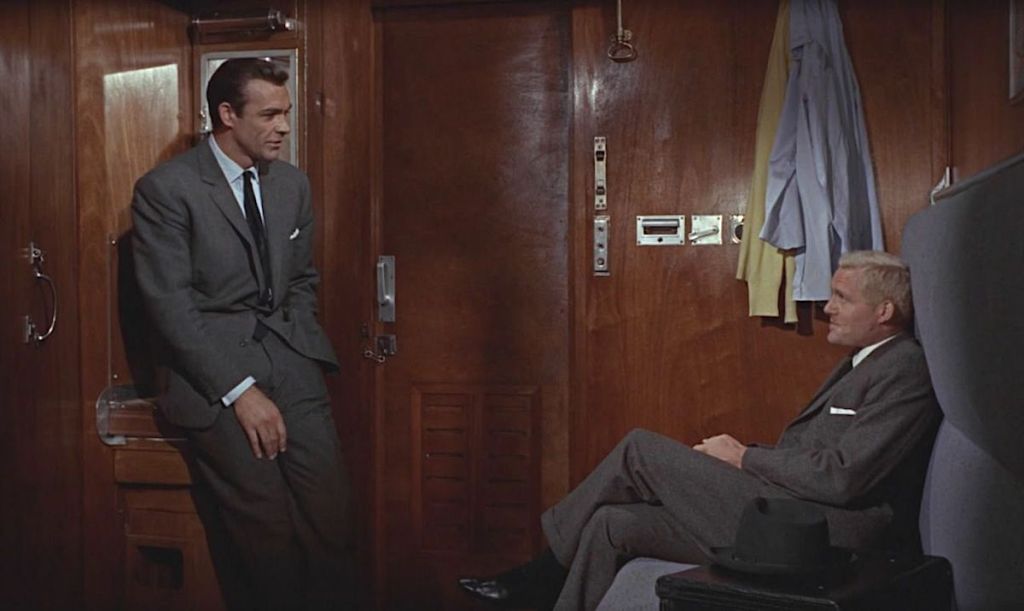
2. From Russia With Love (1963)
Following the success of Dr. No, the Bond film series officially got underway with From Russia With Love, one of the rare 007 outings to feature continuity with the previous film while also expanding upon the template established in its predecessor. As with several of the early films, this one was faithful to the Fleming book which it was based on, as SPECTRE, seeking revenge against Bond for the death of Dr. No, creates an elaborate trap for the British agent involving a defector and several assassins.
From Russia With Love is in many ways a definitive Bond adventure, with the film standing right on the edge between Fleming’s grittier books and the more elaborate direction that the cinematic version took. Connery is even more confident and relaxed in the role, while the villains—Lotte Lenya as the vile Rosa Klebb and a young Robert Shaw as the frightening killing machine Red Grant—are two of the series’ best.
The film also introduces Q and his array of gadgets for the first time, makes the first mention of Blofeld, and establishes the pre-credits sequence that is still a part of the Bond template to this date. Whether it’s the all-time best of the series is open for debate, but it certainly has the best fight scene in the franchise between Bond and Shaw’s Red Grant, and the film itself remains right there at the top—with love. – DK
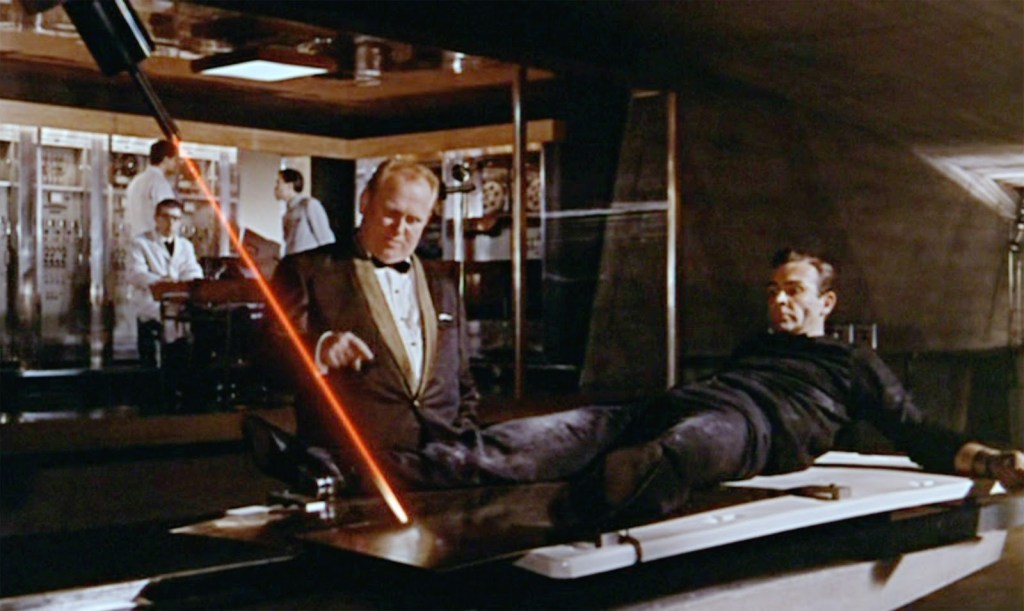
1. Goldfinger (1964)
My favorite scene in Goldfinger is not the one where Gert Fröbe’s titular villain has Bond tied to a table with a laser inching nearer—although who doesn’t love the way Fröbe’s voice rises as he says “No, Mr. Bond I expect you to die”? Nor is it the infamous moment where Bond discovers Shirley Eaton drowned in gold paint. It’s not even the laddish way Sean Connery’s lip curls as he whispers “Pussy” to Honor Blackman.
All of those things are iconic and helped give solid shape to what was previously a fluid definition for Bond and his film series. But for me, the moment where Bond and the franchise became cemented is on a golf course. It’s there that 007 and Auric Goldfinger have made a wager worth one brick of Nazi gold over who wins the next nine holes. Goldfinger of course is a cheat, and has his strongman Oddjob (Harold Sakata) sneak a ball on the green after the boss loses the real thing. But rather than call him on it or beat him despite the crooked handicap, Connery’s Bond just smirks and decides to play a trick on Mr. Goldfinger: He’ll be as dishonest and change balls out again, setting the big guy up to lose his money and his pride—even as both men are keenly aware that they despise each other, and one woman they’ve both romanced in their own broken way has died because of their little games.
It summarizes everything folks love, or love to hate, about Bond: He’s arrogant, reckless, cozy with his enemies, indifferent about his lovers, and just having the goddamn time of his life at every given moment. As per usual, Connery delivers it all with a wolfish grin and internalized chuckle, as if only he’s aware of his inherent superiority.
It’s all laid out in the best Bond movie ever made: The Shirley Bassey theme song that set the standard for every Bond opening titles sequence forever after; the tricked out Aston Martin with an ejector seat; and the wild supervillain plot about irradiating the gold bullion at Fort Knox. Goldfinger sets a perfect table for a perfect Bond movie. And it was on a golf course where Connery’s Bond began to run it. Sixty years on, he’s still winning. – DC

